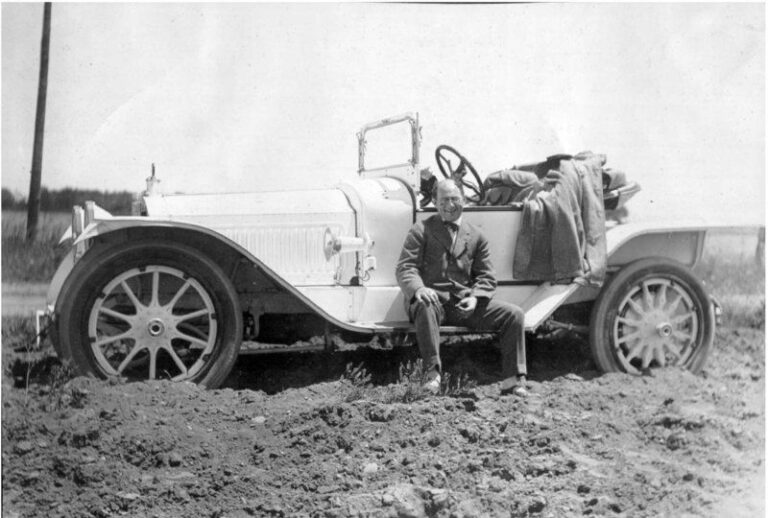Those who are thankful for a rich motorcycle history in Indiana owe part of their gratitude to Carl G. Fisher. Fisher played an important role in the growth and development of the Indiana Motor Speedway which hosted its first motorcycle race in 1909.
Carl G. Fisher: Bicycle Enthusiast
Carl Graham Fisher was born on January 12, 1874, and spent most of his life as an automobile entrepreneur. His first dip into the world of bicycling occurred before the turn of the 20th century when he and his brother opened a small bicycling shop. They were passionate about both cycling and marketing, and Fisher raced often.
Although he began his life with little money, Fisher slowly began working his way to the top by selling products like early models of headlights. Eventually, he took charge of the first auto dealership in the United States of America, located in Indianapolis. Even as Fisher nurtured and grew his businesses, the fuel behind his work was his passion for racing. He was responsible for developing numerous racetracks and roadways for public use.
When Fisher was in his late 30s, he played an instrumental role in the building of the Lincoln Highway, which was the very first auto-friendly road to stretch all the way across the country, from east to west. Later, Fisher helped develop the Dixie Highway, which went all the way across the country, north to south.
Carl G. Fisher: Part of a Team
Carl Fisher was not only interested in the automobile and bicycle industry for his own sake. He knew others shared his passion, and he invested heavily in the industry so that others could enjoy the fruit as well. In 1909, five years before the Lincoln Highway was built, Fisher joined three other men (Arthur Newby, Frank Wheeler, and James Allison) in investing in an Indianapolis racetrack. This racetrack eventually became the Indianapolis Motor Speedway.
Initially, the racetrack seemed to be a flop. The track was comprised of loose rocks, and many racers were severely or fatally injured during its debut. Fisher was determined to make the track safe, and he led the investors to put money toward over 3 million paving bricks. This unbelievable number led to the racetrack’s nickname, “The Brickyard.”
The paving bricks did their job, and two years after the failed first race, almost 100,000 spectators joined each other to watch a 500-mile Memorial Day race, the first of the Indianapolis 500 races.
Other Accomplishments of Carl G. Fisher
Fisher made numerous contributions to the automotive industry throughout his life. He saw its future success and gave everything to be part of its growth. In 1971, Carl G. Fisher was inducted into the Automotive Hall of Fame. Although the Great Depression saw that Fisher lost much of his financial prosperity, it could not lessen the impact he made and continues to make on the racing industry.
Help Us Out!
As a historical society, we also focus on research. Do you have a story to share about motorcycling or motorcycle racing in Indiana? We are collecting motorcycle archives and stories throughout the state of Indiana to share on our website, social media, and annual event. Email indianamps@outlook.com, or call (765) 268-0535.
Call for Support
Donations can be made online through PayPal or to our endowment through the Community Foundation of Grant County.
Thank You!
Image Credit: The Library of Congress – George Grantham Bain Collection

